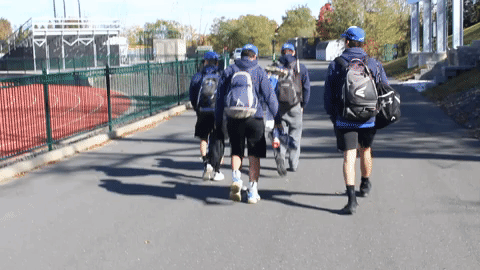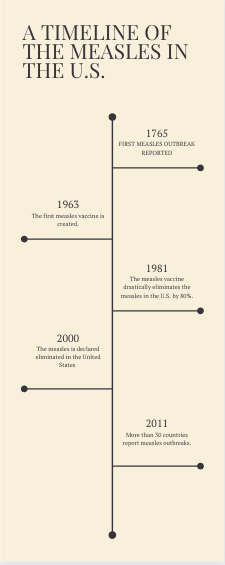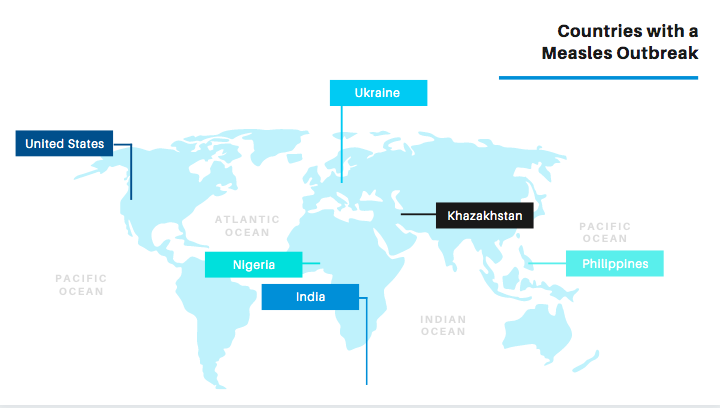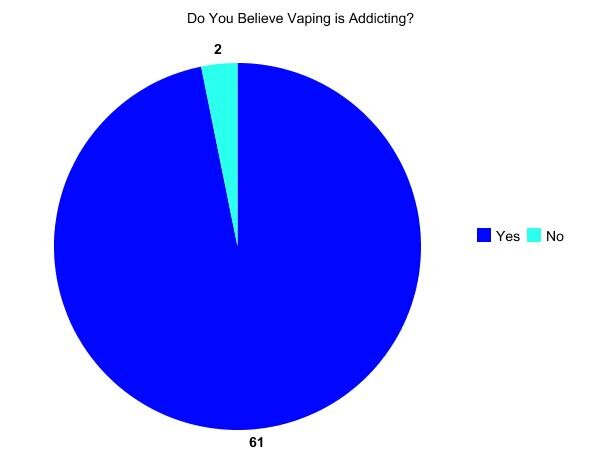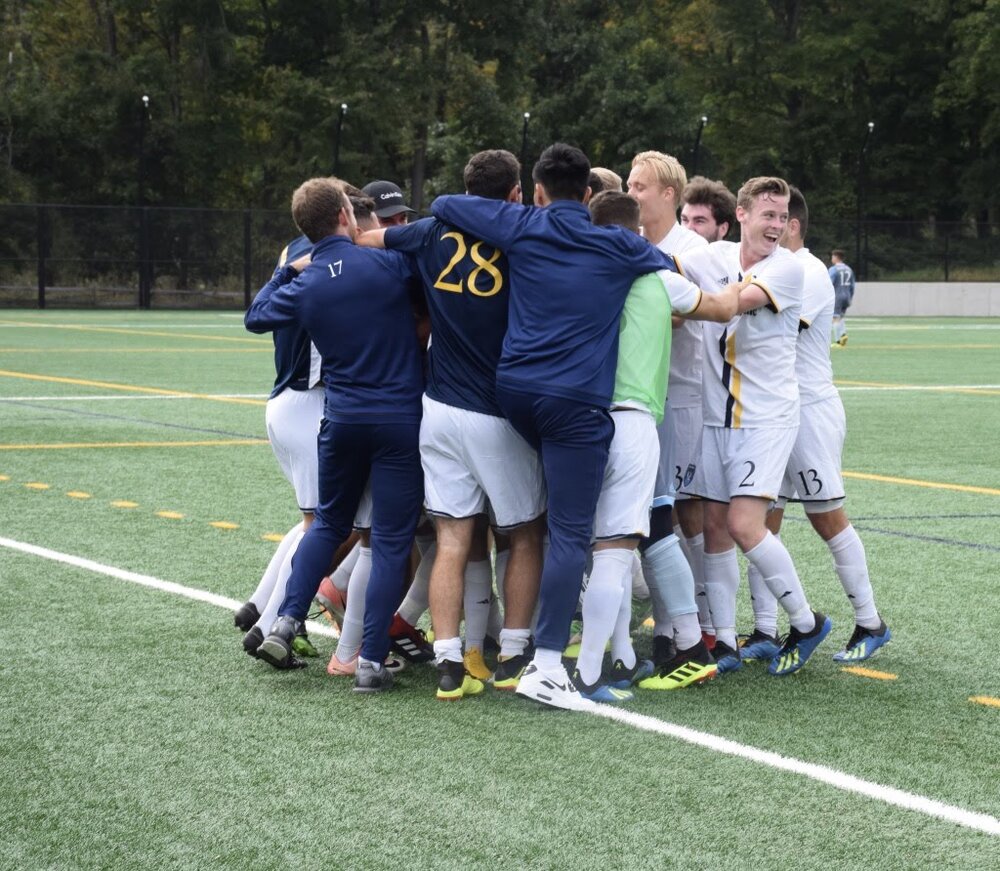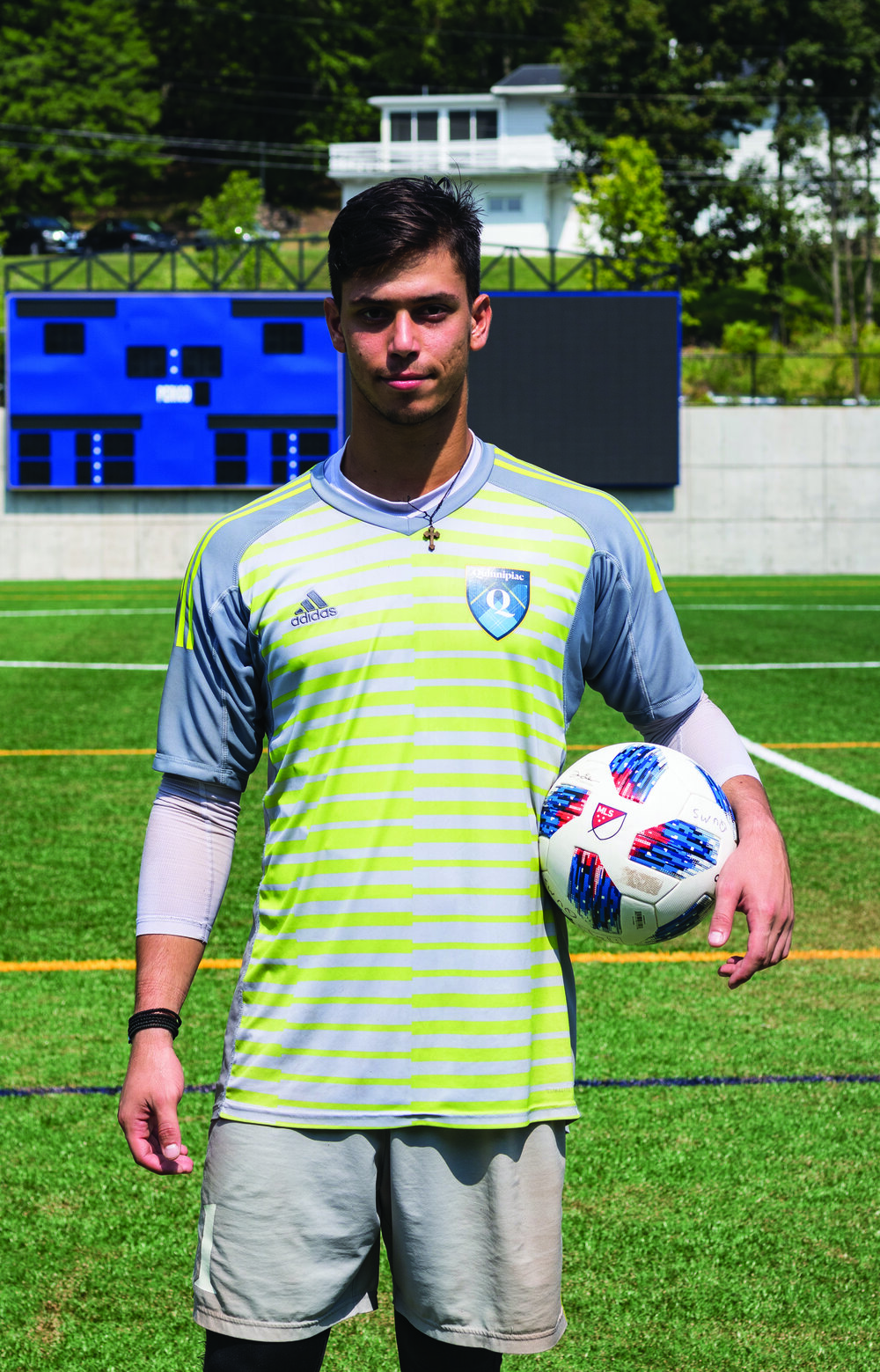By Brooke Reilly
“Hate crimes in the U.S. have increased, so I wouldn’t be surprised if college campuses were acting as a microcosm of the greater U.S.,” said Quinnipiac University Student Government Association President Austin Calvo.
Calvo is a senior at Quinnipiac University, where he is studying political science. He is openly gay and was the victim of multiple hate crimes at Quinnipiac while he was running for SGA positions. These crimes emotionally hurt him.
“Freshman year it kinda sucked because I was just a little freshman,” Calvo said. “I didn’t really have my place at Quinnipiac yet and all those kinds of things, so it just kind of like hurt and made me realize how much people still suck.”
The first crime against Calvo took place in the spring of 2017 when he was running for sophomore class president. Calvo had three running mates who were also running for class SGA positions. The four students hung up posters around campus to campaign prior to elections. At the height of campaign season, Calvo received a call from one of his running mates telling him that someone vandalized one of their posters and to come by her room to see it.
“I went by her room, and I saw what was written on it,” Calvo said. “It was just like penises, like defacing it and something written about me, like me being gay, like a word bubble coming out of my mouth.”
Calvo then spoke with a resident assistant (RA) about this issue. The RA brought this to the attention of the residence hall director, and they filed a report within student affairs.
The second incident occurred in April 2019 while Calvo was running for SGA president.
“I was running for an executive board position, so I had posters up all over both campuses,” Calvo said. “It was in Irma (residence hall), I believe, there was a poster that I had to face. Someone wrote something about me, just like a slur about me being gay or something.”
Although it was similar to the situation Calvo went through two years earlier, he felt differently than he did as a first-year student.
“The one (hate crime) that happened last year (hurt) a little bit less so just because I was like, I’m very confident,” Calvo said. “I’m very sure of myself, and I love myself, and I love who I am. I was like, whatever, someone can hate me. It doesn’t affect me. Who cares?”
Calvo is confident about who he is, but if this were to happen to someone else, he isn’t sure that person would have the same response.
“People of marginalized populations spend their entire lives trying to love themselves for who they are, and then all it takes is one thing like that to tear down years of confidence building,” Calvo said.
When crimes that occur on college campuses are reported, specific steps are taken when investigating and filing reports.
According to clerycenter.org, “the Clery Act is a consumer protection law that aims to provide transparency around campus crime policy and statistics.”
The Clery Act requires every college and university across the country to release an annual security and fire safety report by Oct. 1 of each year. This is called the Clery report and includes a record of all reported crimes that occurred between Jan. 1 and Dec. 31 of the year prior. This document is required to be made available to the public. Quinnipiac’s 2019 Clery report was released on Sept. 23, 2019.

Karoline Keith, Quinnipiac University Clery Compliance Officer
When the crime was first committed, Calvo was busy campaigning for president, so he did not report it right away. At the beginning of this semester, he decided that he should report it; however, he did not go through student affairs this time. Calvo reported the incident directly to the Quinnipiac University Clery Compliance Officer Karoline Keith.
As stated in Quinnipiac’s Clery report, the Clery Compliance Officer must work with the Department of Public Safety, local and state law enforcement, Office of Human Resources, Office of Residential Life, Office of Student Affairs, Division of Athletics, the Title IX coordinator, the deans, the Office of Cultural and Global Engagement and other campus security authorities to track any crimes that take place throughout the year. This is tracked in all areas where students live in Quinnipiac housing. This includes the Mount Carmel campus, the York Hill campus, the North Haven campus, when students travel to conferences or games paid for by the university and students who are studying abroad at places that partner with Quinnipiac.
“Things reported to me this year, in 2019, will be reflected in the 2020 annual security report,” Keith said. “It’s always a year behind.”
According to page 52 of Quinnipiac’s Clery report, “there are four categories of offenses that are required by law for statistical documentation within this report.” These include: criminal offenses, such as murder, sex offenses and other identified serious crimes; VAWA offenses (Violence Against Women Act), such as domestic violence, dating violence and stalking offenses; arrest and referrals for disciplinary action and hate crimes.
Calvo’s incidents are both considered hate crimes on the basis of sexuality, so they fall under the category of offense. Both incidents will appear in the log for the 2020 Clery report reflecting crimes that were reported in 2019. Although the first incident occurred in 2017, it was not reported to Keith until last month along with the incident from April 2019. It is too late to go back and change the statistics from the 2017 Clery Report.
“The Clery statistics reflect numbers on the time they were reported, not the time they occurred,” Keith said. “If something is reported to me this year that occurred last year or two years ago, it would show up in the statistics for the next annual security report that reflects those that year.”
Although all reported crimes are said to be cited in the Clery report, some may not appear in the annual report for various reasons, including people not coming forward with crimes or miscommunications between offices.
“I’d like to think that if they’ve (students) reported it (a crime) to a campus security authority or to one of my campus partners that that statistic would definitely be reflected in these statistics,” Keith said. “But, I do know that whether they want to talk about it is entirely up to whether or not they want to.”
In 2018, the majority of crimes reported took place on the Mount Carmel campus. Very few crimes occurred on the York Hill campus, and no crimes were reported on the North Haven campus.
Over the course of the last three years, the numbers indicated for each crime have fluctuated back and forth. Some noteworthy numbers include rapes, burglary, drug law violation arrests, and hate crimes.

Clery report statistics comparing the number of recorded rapes, drug law violations arrests, burglaries and hate crimes in 2016, 2017 and 2018
In this case, the increase in hate crimes on campus is noteworthy. There were two incidents reported in 2016, one in 2017 and five in 2018.
“There’s a lot going on with our society and our culture and our Supreme Court and the media in those areas,” Keith said. “You start to look at what’s going on outside of the university because we’re just a subculture right of that.”

E-mail sent to all residential students by Quinnipiac University Director of Residential Life Mark DeVilbiss on Nov. 4, 2019.
The university continues to see an increase in hate crimes across campus. On Nov. 4, Director of Residential Life Mark DeVilbiss sent an e-mail to all residential students addressing “recent incidents involving the alleged use of derogatory and racist language by Quinnipiac students.”
“The university prohibits bias and discrimination on the basis of race, religion, ethnicity, ability, national origin, age, gender identity, gender expression, sex, sexual orientation or veteran status,” DeVilbiss said in the e-mail.
DeVilbiss said that he has seen bias related incidents through the use of derogatory and racial terms throughout his time with the university over the last three years.
“That happens sometimes both in person, sometimes it has been in the form of a social media post or graffiti occasionally or vandalism of some kind,” DeVilbiss said. “We don’t have a ton of incidents, but we have some, and we address those.”
During RA training sessions, a topic that is heavily stressed is identity.
“Last August, a keynote speaker (came), we had time to break out into small groups to discuss,” DeVilbiss said. “We want to make sure that our staffs are educated about the many different types of identity and whether that’s racial, gender identity, abilities, all of that, we talk about that.”
The RAs are trained on how to respond to information that they learn as well. They are told to take pictures or screenshots if it is on social media and collect details. This allows the Office of Residential Life to follow up appropriately once an incident is reported.They are also taught how to respond sensitively by using inclusive language and providing comfort.
“We seek always to support the people who are involved,” DeVilbiss said. “It can be challenging to support because being the subject or discriminated against in that way is a very traumatic experience for students and can be very emotional.”
DeVilbiss encouraged students to fill out an incident report form if they are aware of any hateful behaviors occurring on campus.

Hamden Police Department
“We file incident reports, Residential Life incident reports, for all incidents that involve bias and discrimination,” DeVilbiss said. “Then those are reviewed by our Student Conduct Office in consultation with our Clery Officer, who would then include that data in the annual Clery report.”
The Hamden Police Department works closely with the Department of Public Safety when it comes to crimes on campus. Between Jan. 1, 2019 and Oct. 1, 2019, Hamden police responded to calls on the Mount Carmel campus on 339 occasions, and they responded to the York Hill campus 75 times. Most of these were general patrols because the university hires the department to do nightly patrols. The majority of the other reasons that they came to campus were for motor vehicle accidents, intoxicated persons and general medical calls.
Case incident reports for the Mount Carmel campus (left) and York Hill campus (right)
“Even when they don’t hire us, the area car is going to go over there and patrol it (campus) normally and also take complaints there,” said Sgt. Anthony Diaz of the Hamden Police Department. “If it’s a serious call for whatever reason, they’ll send two cars in addition to a supervisor.”

Timely warning e-mail from Quinnipiac University Chief of Public Safety Edgar Rodriguez
On Nov. 13, Chief of the Department of Public Safety Edgar Rodriguez notified the Quinnipiac community about a student who reported being sexually assaulted just outside of campus. The notification came via email as a timely warning to comply with the Clery Act. The student reported that the incident occurred at the intersection between New Road and Mount Carmel Avenue.
In a situation like this, the Hamden Police Department has to step in to assist with the investigation.
“The special victims unit, they’re going to investigate that type of crime,” Diaz said. “It’s not going to be like a patrolman function or an officer who was hired there just for patrolling factors. He might do the initial investigation, but we’re going to call in the detective division and let those guys who specialize in that stuff handle that case.”
Hamden Police have not found the men accused of the assault, so Quinnipiac’s Title IX office can’t do much to help since its job is to help remedy hostile situations. But sometimes, even if the accused is known, Title IX offices don’t always help. That was the case at DePaul University in Chicago earlier this year.
Student reporters wondered why DePaul’s Title IX office wasn’t represented at sexual assault awareness month events in April. Ella Lee and Emma Oxnevad are editors for The DePaulia, which is the university’s student-run newspaper. Upon noticing this, they decided to take matters into their own hands and investigate.

The DePaulia, DePaul University’s student-run newspaper
They began by going to more sexual assault awareness events and speaking with groups on campus who were directly involved with these events. They then sent out a survey to the student body by posting in class group Facebook pages asking about students experiences with the Title IX office. Students were allowed to remain anonymous if they chose to because of the sensitivity of the topic.
“We did have one instance of a student who gave her name and was willing to be quoted under a fake name, who said that she had an encounter with the office where she was assaulted at a campus event,” Oxnevad said. “She was told by whoever she was in contact with within that office (Title IX) that they had spoken to the person she had accused prior to meeting with her, and that given that she had been drinking at this event, or that she had admitted to drinking, that they couldn’t believe her story.”
The only response that the Title IX office gave the student was that she should go to counseling for alcoholism. This alarmed Lee and Oxnevad because it proved to them that things were not being handled properly within the Title IX office.
They published the student’s story, but they could not get in contact with the Title IX coordinator or get a statement from the university. They sent multiple messages but never received a response. After several weeks went by, the DePaulia’s faculty advisor told the student journalists that they needed to get something from the coordinator because it was only showing one side to the story.
They decided to go to the Title IX office to ask to speak with the Title IX coordinator in person. When they got there, a student worker was at the front desk. They explained what they were inquiring, and the worker set up an appointment for them to meet with the coordinator.
The following day, their advisor was sent an email from the dean of the School of Communications who received word that Lee and Oxnevad had faked being assaulted to get an interview. The students both said this was completely incorrect and there must have been miscommunication along the way.
“There was talk about there maybe having to be a student trial, but then obviously, the coordinator or whoever in the Title IX office backtracked and said that it didn’t happen and that she misunderstood the situation,” Lee said.
The students had finally received permission to interview Jessica Landis, who was the Title IX coordinator at the time and released her response to their original story. After the story was published, Landis left the university in the middle of her contract. The students did not know if she was fired or if she quit, but they believe that it had to do with the story they wrote.
At the beginning of the fall 2019 semester, DePaul hired a new director of gender equity. This role was previously known as the Title IX coordinator. Lee and Oxnevad sat down to interview Ann Skiffington on Nov. 11, who was hired for this position, to learn more about the Title IX office and what her role is.
Lee and Oxnevad said that the most important thing that they learned is that Title IX officers must remain objective and cannot support any students in their cases. They felt that a lot of students were not aware of that.
“The Title IX office could be mishandling cases, but also, they’re not there to be a shoulder to cry on,” Lee said.
The student journalists said that they believe that there is still more to the story about issues within the university’s Title IX office.
When asked her opinion on the Title IX issues at DePaul University, Quinnipiac University Title IX Coordinator Catlin Wells said, “I cannot speak to the specifics of the DePaul case. I can tell you, however, that Quinnipiac University takes seriously all allegations of discrimination. Students have a right under the federal law, and under university policies, to file a complaint of discrimination or misconduct. Additionally, students have a right to a prompt, thorough and impartial response.”
Although there are not any current issues within Quinnipiac’s Title IX office, there have been previous issues prior to when Wells began in December 2018. One of these issues included a case that went to trial in July 2019 saying that the university was “motivated to favor female students over male students in its (Title IX) disciplinary proceedings.” This was an older case from 2017.
“As a Title IX coordinator, it is my responsibility to treat everyone who comes through my door with dignity and respect and to give all students an opportunity to be heard,” Wells said.
The result has meant more work for Wells and her office, but students know they have a safe place to go when they encounter a hostile environment.
“I train on every single policy,” Wells said. “I have found that as I have trained the institution more, we’ve seen an uptick in reporting overall realistically because people know where to go if something happens. When people know who to tell, they’re more likely to share that information.”
That information can lead to courageous students.
“The spirit of Clery is intended to give guidance to prospective students and students that are going here to whether or not they would want to come here and how the university in general is, what kind of crimes are occurring here,” Keith said. “I think the next question, the Clery report, the annual security report, is embedded with what we’re doing to protect our students and what we’re doing in the area of being proactive rather than reactive.”
Calvo has another idea that he believes can help, which is having conversations about hate crimes and their impact on students.
“Being gay is just part of my identity, but it’s not who I am,” Calvo said. “I think that just kind of having dialogue and conversations can really work to reduce hate crimes.”












